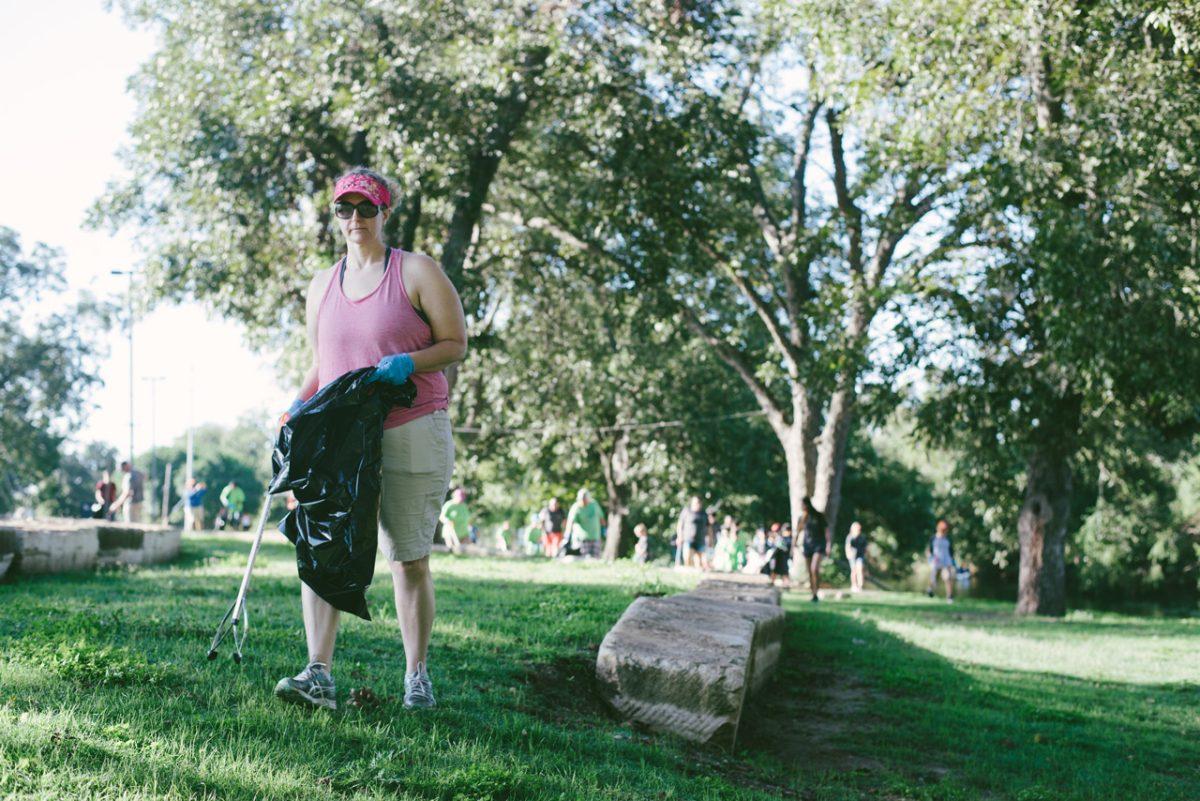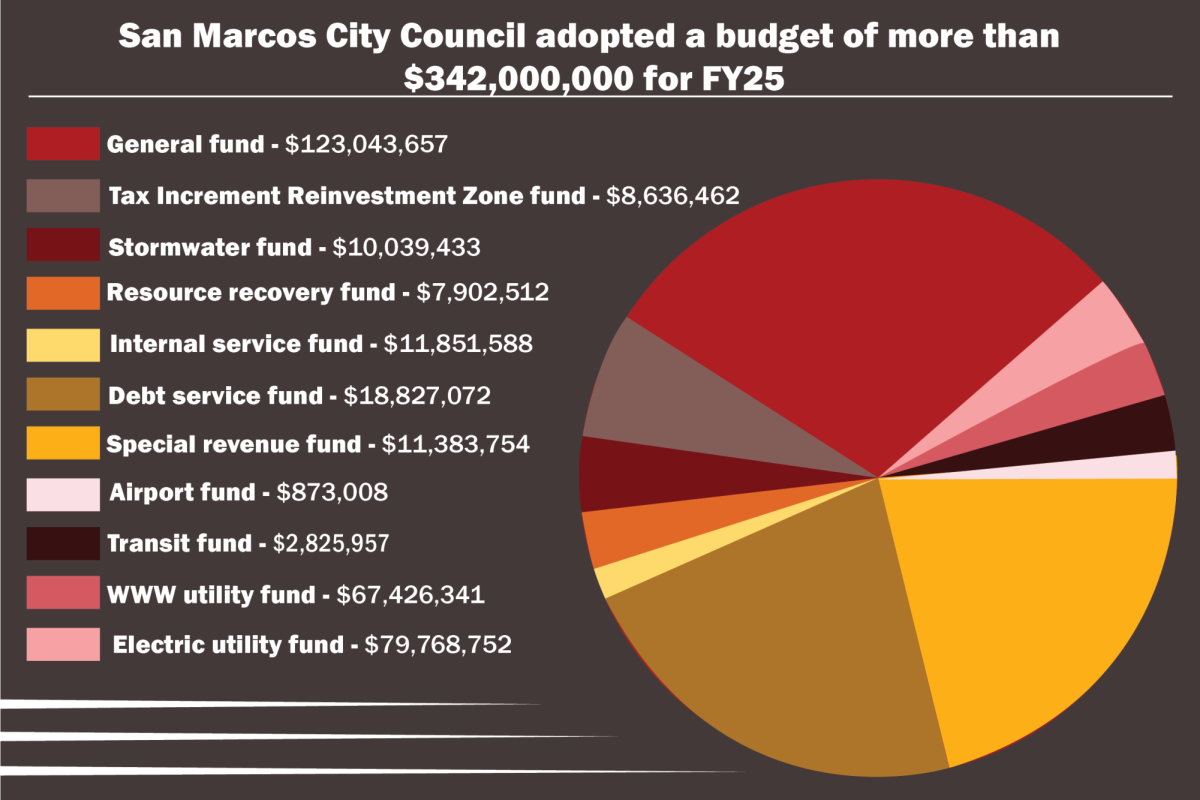The Keep Texas Beautiful Foundation celebrated its 50th anniversary in partnership with the Don’t Mess with Texas and the Ocean Conservancy’s International Coastal Cleanup effort in Texas by sweeping through the rivers of San Marcos on Saturday, Oct. 7.
Keep San Marcos Beautiful is an opportunity for the community to join together in cleaning up the rivers that make San Marcos so unique. Gathering bottles, cans and trash, volunteers swept through the most litter-concentrated areas of the San Marcos waters, and aspires to teach the community how to prevent such tragedies.
After volunteers arrived at the City Park Rec Hall at 8:30 a.m., they dispersed to cleanup areas including: San Marcos River from City Park to Stokes Park, Purgatory Creek, Willow Creek, downtown and drainage ditches along Hopkins, Charles Austin and Hwy 123.
KSMB is a nonprofit organization that not only works towards the beautification of this city but also educates the community on each individual’s environmental impact.
Amy Kirwin, community enhancement initiatives manager for KSBM, said while litter is still an area of concern, microlitter is a much more damaging culprit to the environment.
Microlitter ranges from bottle caps to ponytail holders to cigarette buds. It is the trash that you see on the ground and might say that it is so small, picking it up would make no difference. However, all of this trash makes its way into rivers, having a severely negative impact on wildlife.
Students and local residents can take preventative measures to keep San Marcos beautiful.
“People need to: one, be mindful of what they actually have when they go to the river and two, pick up trash as you are walking around,” Kirwin said.
The Wildlife Society is an organization that contributes to the river and environmental conservation. Sonia Duran, president of the Wildlife Society, described the society as a team whose “goal is conservation and educational outreach.” They participate in river cleanups, host kids fishing days, and conduct scientific disease research.
Duran had been collaborating with the Wildlife Society for several years before taking her presidency, which has lasted the previous two semesters. She also emphasized the dangers of microlitter.
“When it comes down to it, we can do all the cleanups we want – which does have a huge impact – but lack of education is the most dangerous part,” Duran said
Animals are most affected by the microlitter that settles into the waterways. Duran described when she found a large, deceased fish that had gotten wrapped in the debris of an old fishing line. The fish had become so tightly entangled in this line that the wire had cut all the way down to the bone.
Fishing lines are durable and a common litter item. Trash cans are set up along waterways to be used for debris such as this.
If students are looking for more ways to get involved with river conservation, KSMB holds monthly hotspot cleanups. Similarly, there are many student involvement organizations on Texas State’s campus that work towards environmental preservation.
Categories:
How to keep San Marcos beautiful
October 10, 2017
An attendee of the Fall Sweep looks for trash Oct. 7 at the Lions Club Tube Rental.
Photo by Kirby Crumpler | Staff Photographer
0
Donate to The University Star
Your donation will support the student journalists of Texas State University. Your contribution will allow us to purchase equipment and cover our annual website hosting costs.
More to Discover














